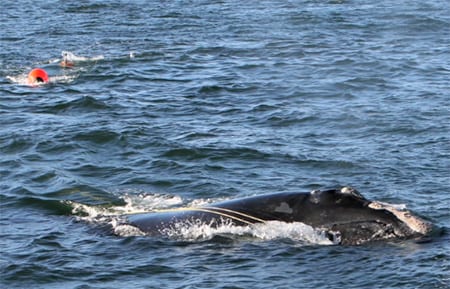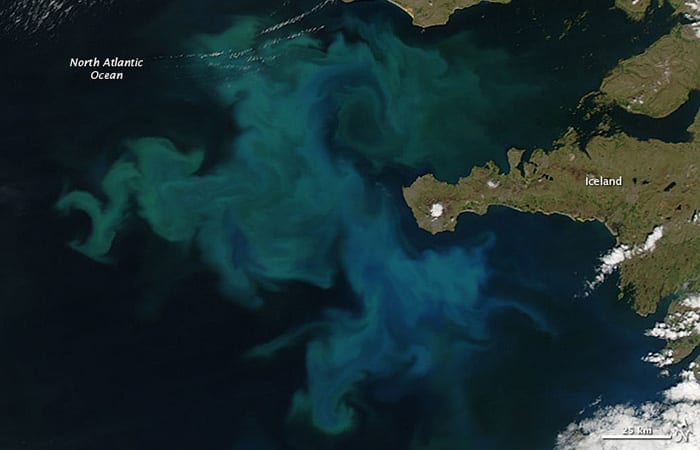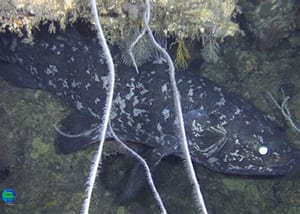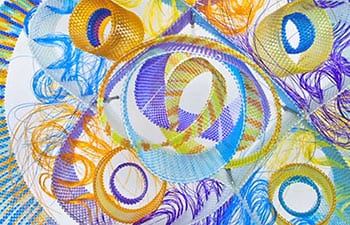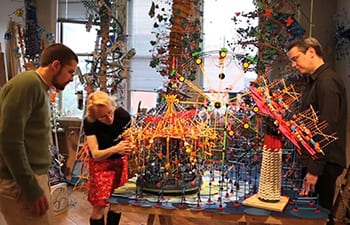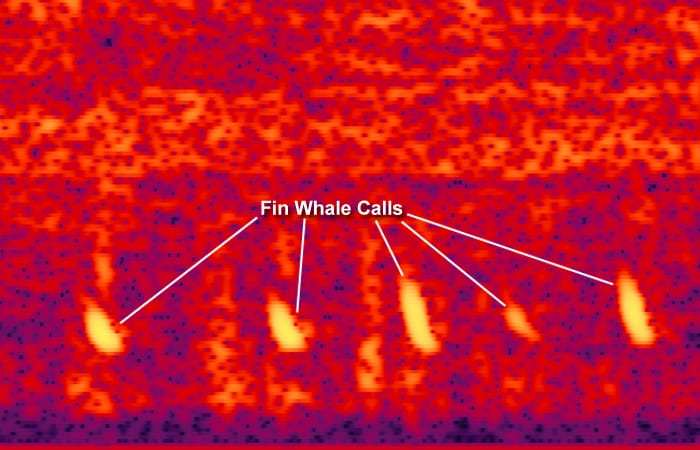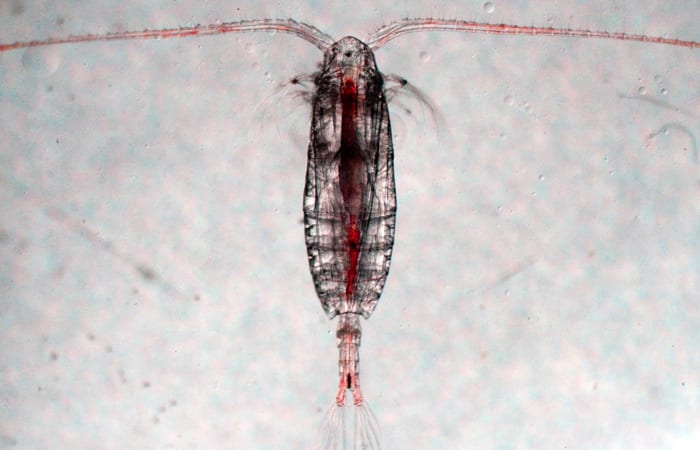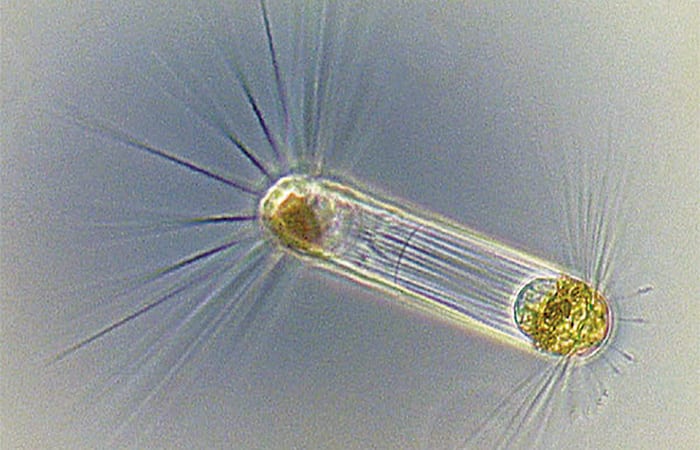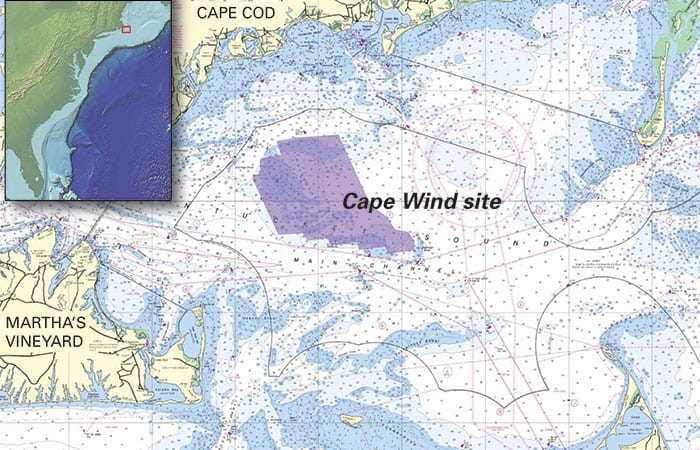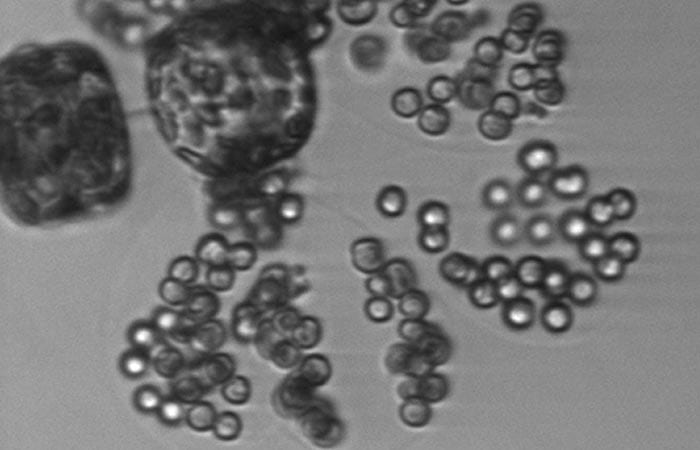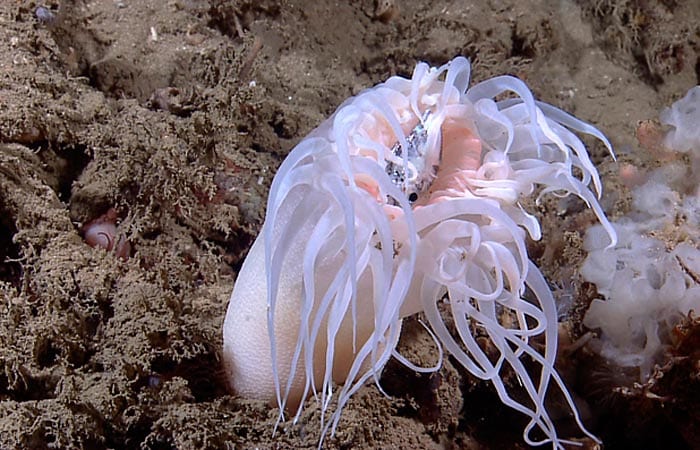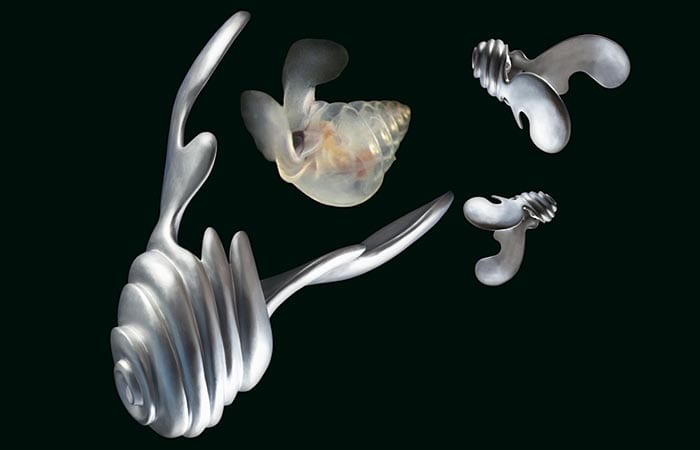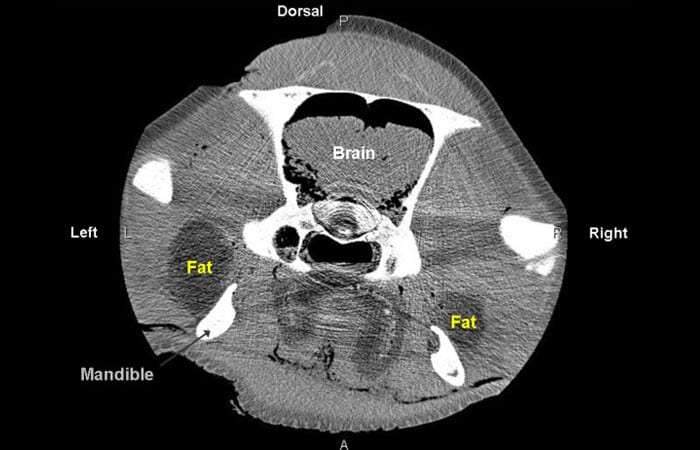Biology
Tangled Up in Fishing Gear
Study reveals how fishing gear can cause slow death of whales
Using a “patient monitoring” device attached to a whale entangled in fishing gear, scientists showed for the first time how fishing lines changed a whale’s diving and swimming behavior. The…
Read MoreArt Meets Science in a Book called Bloom
When conditions of light and nutrients align in the surface waters of the ocean, tiny single-celled algae called phytoplankton respond with explosive growth and reproduction in a phenomenon known as…
Read MoreNew Robotic Instruments to Provide Real-Time Data on Gulf of Maine Red Tide
A new robotic sensor deployed by Woods Hole Oceanographic Institution (WHOI) in Gulf of Maine coastal waters may transform the way red tides or harmful algal blooms (HABs) are monitored…
Read MoreExperts Call for Network to Monitor Marine Biodiversity
A group of oceanographic experts is calling for the establishment of a national network to monitor the diversity of marine life, a key bellwether of ocean and human health. Their…
Read MoreDecoding the Mystery Fish
Few marine animals capture biologists’ imaginations more than the mysterious, almost mythical coelacanth, a 5-foot-long fish that was thought to have gone extinct in the age of dinosaurs—until a live…
Read MoreResearch Enables Fishermen to Harvest Lucrative Shellfish on Georges Bank
Combined research efforts by scientists involved in the Gulf of Maine Toxicity (GOMTOX) project, funded by NOAA’s Ecology and Oceanography of Harmful Algal Blooms (ECOHAB) program, and administered by the…
Read MoreResearchers Issue Forecast for ‘Moderate’ New England Red Tide in 2013
New England is expected to experience a “moderate” red tide this spring and summer, report NOAA-funded scientists studying the toxic algae that cause blooms in the Gulf of Maine. The…
Read MoreThe Synergy Project, Part II
Back in my high school, and maybe yours too, kids naturally separated into cliques—jocks, punks, preppies, hippies, and at the extremes of the mythical left- and right-hemisphere brain spectrum, nerds…
Read MoreThe Synergy Project
Back in my high school, and maybe yours too, kids naturally separated into cliques—jocks, punks, preppies, hippies, and at the extremes of the mythical left- and right-hemisphere brain spectrum, nerds…
Read MoreSeismic Studies Capture Whale Calls
In November 2012, the California Coastal Commission met to consider a request by Pacific Gas and Electric to study a geologic fault that runs along the central California coast just…
Read MoreBacteria Hitchhike on Tiny Marine Life
Amalia Aruda knows that tiny marine creatures have big impacts. Some can kill you. Aruda studies some of the smallest animals in the ocean—barely visible crustaceans called copepods and the…
Read MoreA Day in the Life of a Phytoplankter
Earth’s vast oceans teem with innumerable microscopic plants that make the fertility and abundance of the United States’ Grain Belt look like, well, a drop in the ocean. These tiny…
Read MoreScientists Use Marine Robots to Detect Endangered Whales
Two robots equipped with instruments designed to “listen” for the calls of baleen whales detected nine endangered North Atlantic right whales in the Gulf of Maine last month. The robots…
Read MoreStudy Looks at Gray Seal Impact on Beach Water Quality
Scientists from the newly created Northwest Atlantic Seal Research Consortium (NASRC) are using data collected by the Massachusetts Department of Public Health (MDPH) to investigate whether seals may impact beach…
Read MoreWHOI Biologist Ketten Named AAAS 2012 Fellow
Darlene Ketten of the Woods Hole Oceanographic Institution has been named a Fellow of the American Association for the Advancement of Science (AAAS). Election as an AAAS Fellow is an…
Read MoreGenetic Patterns of Deep-Sea Coral Provide Insights into Evolution of Marine Life
The ability of deep-sea corals to harbor a broad array of marine life, including commercially important fish species, make these habitat-forming organisms of immediate interest to conservationists, managers, and scientists.…
Read MoreWhat Is the Sound of 130 Wind Turbines Turning?
Federal officials examined a long list of potential impacts from the nation’s first offshore wind farm, slated to begin construction in Nantucket Sound in 2013: effects on ocean vistas, airplane…
Read MoreWHOI Scientists and Engineers Partner with World-Renowned Companies to Market Revolutionary New Instruments
Woods Hole Oceanographic Institution (WHOI) researchers have partnered with two companies to build and market undersea technology developed at WHOI: the Imaging FlowCytobot, an automated underwater microscope, and BlueComm, an underwater communications system that uses light to provide wireless transmission of data, including video imagery, in real or near-real time.
Read MoreBrown Tides and Redfielders
Come spring, Louie Wurch’s mind turns toward softball and another, less idyllic seasonal phenomenon: brown tides. Both scientist and shortstop, Wurch spearheaded the creation of the Biology Department’s team in…
Read MoreBeneath Arctic Ice, Life Blooms Spectacularly
Scientists have discovered a massive bloom of phytoplankton beneath ice-covered Arctic waters. Until now, sea ice was thought to block sunlight and limit the growth of microscopic marine plants living…
Read MoreOcean Explorers Probe Gulf of Mexico
The Gulf of Mexico may be a source of food, fuel, and fun for millions of Americans, but vast reaches of it have never been mapped or examined in detail.…
Read MoreExhibit Spotlights Sea Butterflies
Artist Cornelia Kubler Kavanagh is passionate about exploring the ocean’s great unknowns. Via her latest work, she has found a kindred spirit in Gareth Lawson, a biological oceanographer at Woods…
Read MoreFats In Whales’ Heads May Help Them Hear
For decades, scientists have known that dolphins and other toothed whales have specialized fats associated with their jaws, which efficiently convey sound waves from the ocean to their ears. But…
Read More
